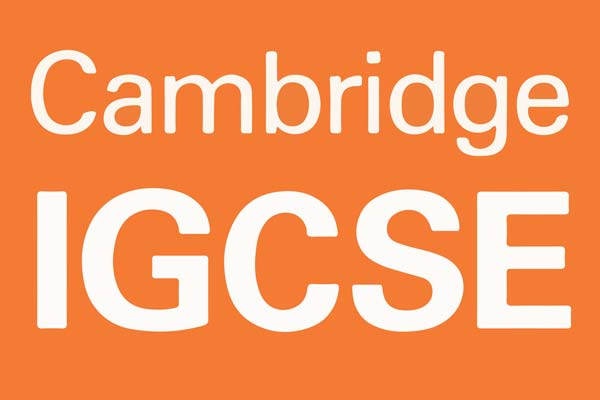IGCSE Grading System Revealed: How to Secure Your Path to Top Universities!
Let’s explore the IGCSE grading system! We’ll learn how it works, what changes are coming, and why it’s essential for getting into college or finding a job. Plus, get some handy tips and tricks on how to get better grades. So, if you’re curious about how the IGCSE grading system can affect your future, keep reading!
IGCSE Grading System
The IGCSE is an internationally recognized student qualification, typically taken at 16. The IGCSE grading system is a well-established and widely-used system that universities, parents, and schools know and trust.
The IGCSE grading system uses a letter grading scale from A*-G, with A* being the highest grade and G being the lowest. In addition, the system also includes a grade F for Cambridge IGCSE only, which ranges from 30-39%.
| Grade | Percentage Uniform Mark Range |
|---|---|
| A* | 90-100 |
| A | 80-89 |
| B | 70-79 |
| C | 60-69 |
| D | 50-59 |
| E | 40-49 |
| F | 30-39 (Cambridge IGCSE only) |
| G | 20-29 (Cambridge IGCSE only) |
Schools worldwide, including Cambridge International Schools, which offer a wide range of IGCSE subjects, use the IGCSE grading system. Students can take IGCSE exams in various subjects, including Mathematics, Science, English, and Humanities.
One of the benefits of the IGCSE grading system is that it provides a clear and consistent way of assessing student performance. This makes it easier for universities and employers to compare students’ achievements from different schools and countries.
Understanding Grades
The IGCSE grading system uses a scale of A*-G to assess students’ performance. The A* grade is the highest, while G is the lowest. The grades are determined based on the student’s exam performance, and certain mark thresholds are specified for each grade. To receive a particular grade, students must meet the requisite marks.
With the introduction of the new grading system in 2023, the A*-G grading system will be replaced with a new scale of 9-1. The highest achievable grade will be 9, while the lowest will be 1. The grading system will be used to assess students’ exam performance.
The new grading system is designed to provide a more accurate and detailed assessment of students’ performance. The new scale will enable teachers and universities to differentiate between students’ performance more effectively. The new grading system will also make it easier for employers to understand students’ academic achievements.
The grading system is based on the principle of proportionality. The proportion of students achieving a particular grade will depend on the student’s ability to take the exam. The grading system takes into account the ability of the candidates entered for the exam.
For instance, if students taking a Cambridge IGCSE are generally more skilled than others, then more students would earn the top grades than if the students had lower abilities.
Grade Boundaries
IGCSE exam grade boundaries, set by Cambridge Assessment International Education, denote the minimum marks needed for each grade. They are based on exam difficulty and student performance and are released a few weeks after the exam results.
🌟 Hey Students! 🚀 Ready for the ultimate experience? Join us on Studentsinside.com's Facebook, YouTube, WhatsApp, and LinkedIn. Click now for tips, fun, and success vibes! 🌈✨ #StudentLife #JoinUs
The grade boundaries for IGCSE exams are not fixed and can vary from exam session to exam session. This is because the difficulty of the exam can vary, and the students’ performance can also vary. The grade boundaries are set to maintain the same standard across all exam sessions.
The grade boundaries for IGCSE exams are usually set so that the top grades are awarded to the top-performing students. For example, a grade A* may require a mark of 90% or above, while a grade A may require a mark of 80% or above. The grade boundaries for the other grades are set accordingly.
It is important to note that the grade boundaries for IGCSE exams can differ depending on the subject. For example, the grade boundaries for Mathematics may be higher than those for History. This is because some subjects may be more difficult than others.
Grade Conversion
The IGCSE grading system uses a letter grade scale from A* to G, with A* being the highest grade achievable and G being the lowest.
However, in some cases, it may be necessary to convert these grades to a percentage uniform mark for various purposes such as university admissions or job applications.
The following table shows the percentage uniform mark range for each IGCSE grade:
| Grade | Percentage Uniform Mark Range |
|---|---|
| A* | 90-100 |
| A | 80-89 |
| B | 70-79 |
| C | 60-69 |
| D | 50-59 |
| E | 40-49 |
| F | 30-39 (Cambridge IGCSE only) |
| G | 20-29 (Cambridge IGCSE only) |
It is important to note that the percentage uniform mark range for Grade A in the Cambridge International AS Level qualification is 80-100, as there is no Grade A* for this qualification.
In addition, it is worth noting that the IGCSE grading system is different from other grading systems, such as the American GPA or the French Baccalaureate.
Therefore, checking with the relevant institutions or employers on their specific requirements and conversion methods is essential.
Pass and Fail in IGCSE
The IGCSE grading system is based on a scale of A*-G, where A* is the highest and G is the lowest grade. To pass an IGCSE exam, a candidate must achieve a minimum grade of C or 4, depending on the grading scale. If a candidate fails to achieve a minimum grade of C or 4, they are considered to have failed the exam.
It is important to note that IGCSE exams are not designed to be easy, and candidates are expected to work hard and prepare thoroughly for their exams. However, if a candidate fails to achieve the minimum grade required to pass the exam, they can retake it in a subsequent session.
In addition to the A*-G grading scale, IGCSE exams are graded using percentage uniform marks. This grading system provides a more detailed breakdown of a candidate’s performance and can be helpful for universities and employers when evaluating a candidate’s academic achievements.
Impact of IGCSE Grades on University Admissions
IGCSE grades can play a significant role in determining a student’s future education and career opportunities. Universities and colleges worldwide recognize and value the IGCSE curriculum, often used as a benchmark for admission to higher education institutions.
Recognition by Universities and Colleges Many universities and colleges recognize IGCSE grades as an indication of a student’s academic ability and potential.
Some universities require a minimum number of IGCSE subjects and grades for admission to specific programs. For example, the University of Cambridge requires a minimum of five IGCSE subjects, including English and Mathematics, with grades of A*-C for admission to their undergraduate programs.
Importance for Further Education IGCSE grades can also impact a student’s further education opportunities. Many students use their IGCSE grades as a stepping stone to further education, such as A-levels or International Baccalaureate (IB) programs. In some cases, IGCSE grades may be used as a basis for admission to these programs.
Career Opportunities IGCSE grades can also affect a student’s career opportunities. Employers may use IGCSE grades to indicate a candidate’s academic ability and potential, particularly in industries that require a strong foundation in subjects such as Mathematics and Science.
Comparison with Other Education Systems
Universities, parents, and schools worldwide widely recognize and trust the IGCSE grading system. However, it is crucial to understand how it compares to other education systems, particularly those in the United States and the United Kingdom.
The most commonly used grading system in the United States is the letter grade system, where grades range from A to F. In comparison, the IGCSE grading system ranges from A* to G. It is worth noting that the A* grade is not equivalent to an A grade in the United States.
The A* grade is a higher level of achievement and is awarded to students who have demonstrated exceptional understanding and application of the subject matter.
In the United Kingdom, the grading system for GCSEs has recently changed from A*-G to 9-1. The IGCSE grading system remains unchanged at A*-G.
While the 9-1 grading system may take some time for universities and employers to understand fully, it is essential to note that the IGCSE grading system is still widely recognized and trusted by universities in the UK.
How to Improve IGCSE Grades
Improving IGCSE grades requires combining practical study techniques, utilizing past papers and mock exams, and seeking help from teachers and tutors.
Effective Study Techniques
Effective study techniques play a crucial role in achieving good grades. Students should develop a study schedule that includes regular study sessions and breaks. They should also find a quiet and comfortable place to study and avoid distractions like mobile phones and social media.
Taking notes during class and reviewing them regularly helps students retain information. Additionally, students should actively participate in class discussions and ask questions to clarify doubts.
Utilization of Past Papers and Mock Exams
Practicing past papers and mock exams is an effective way to prepare for the exam. It helps students understand the exam format, the types of questions asked, and the time management required.
Students should practice past papers and mock exams well before the exam date. They should also analyze their performance and identify areas to improve.
Seeking Help from Teachers and Tutors
Students should be quick to seek help from their teachers and tutors. They can clarify any doubts and get additional help with complex topics.
Teachers and tutors can also provide valuable feedback on students’ performance and suggest ways to improve. Students should actively participate in class discussions and seek help whenever necessary.








